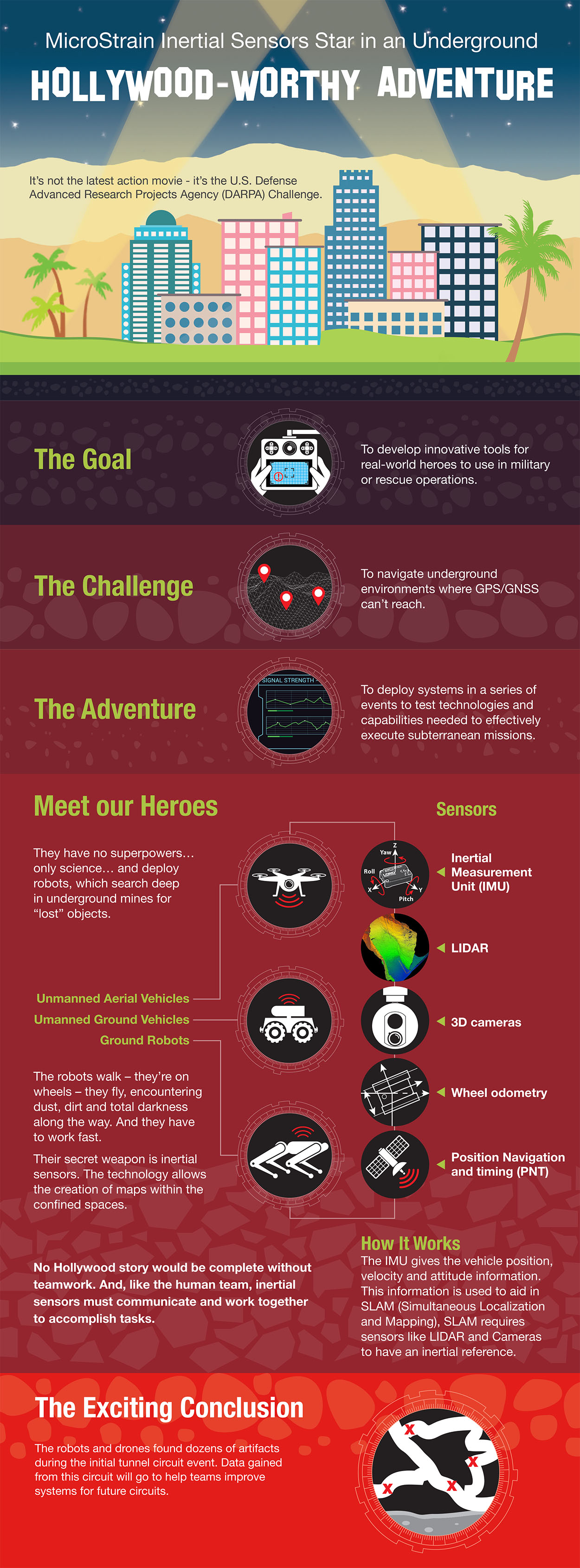Complex underground settings present significant challenges for military
and civilian first responders, with hazards varying drastically across
domains that can degrade or change over time and are often too high-risk
for personnel to enter. The appeal and effectiveness of unmanned systems
prompted Congress to mandate that one third of all U.S. military vehicles
be unmanned. The DARPA Subterranean or “SubT” Challenge seeks novel
approaches to rapidly map, navigate and search underground environments
during time-sensitive combat operations or disaster response scenarios.
Navigation subsystems are integral for performance in underground
environments. MicroStrain inertial sensors provide inertial measurements and
aid navigation systems for unmanned vehicles. Using advanced technology,
these sensors are helping teams in the DARPA SubT Challenge succeed.

As part of the challenge, teams were required to detect and locate certain
artifacts, within less than 20cm (8”) of their actual location. In the
course of two days, Team Explorer pinpointed 25 artifacts, 14 more than any
other team. This demonstrated ability to locate objects reflects the
accuracy of MicroStrain navigational data. Several other teams, including
those from Colorado State, and teams from Australia and Czechoslovakia, are
using MicroStrain sensors in their robots. Parker LORD is a participating
sponsor for each of them and a sponsor of Team Explorer, winner of
the DARPA Subterranean Challenge Tunnel Circuit.
DARPA Teams Using MicroStrain Inertial Sensors
-
Explorer
- Carnegie Mellon University
- Oregon State University
-
MARBLE
- University of Colorado, Boulder
- University of Colorado, Denver, Scientific Systems Company, Inc.
- Robotika.cz
Emesent drones are used by some teams in the DARPA Subterranean Challenge.










